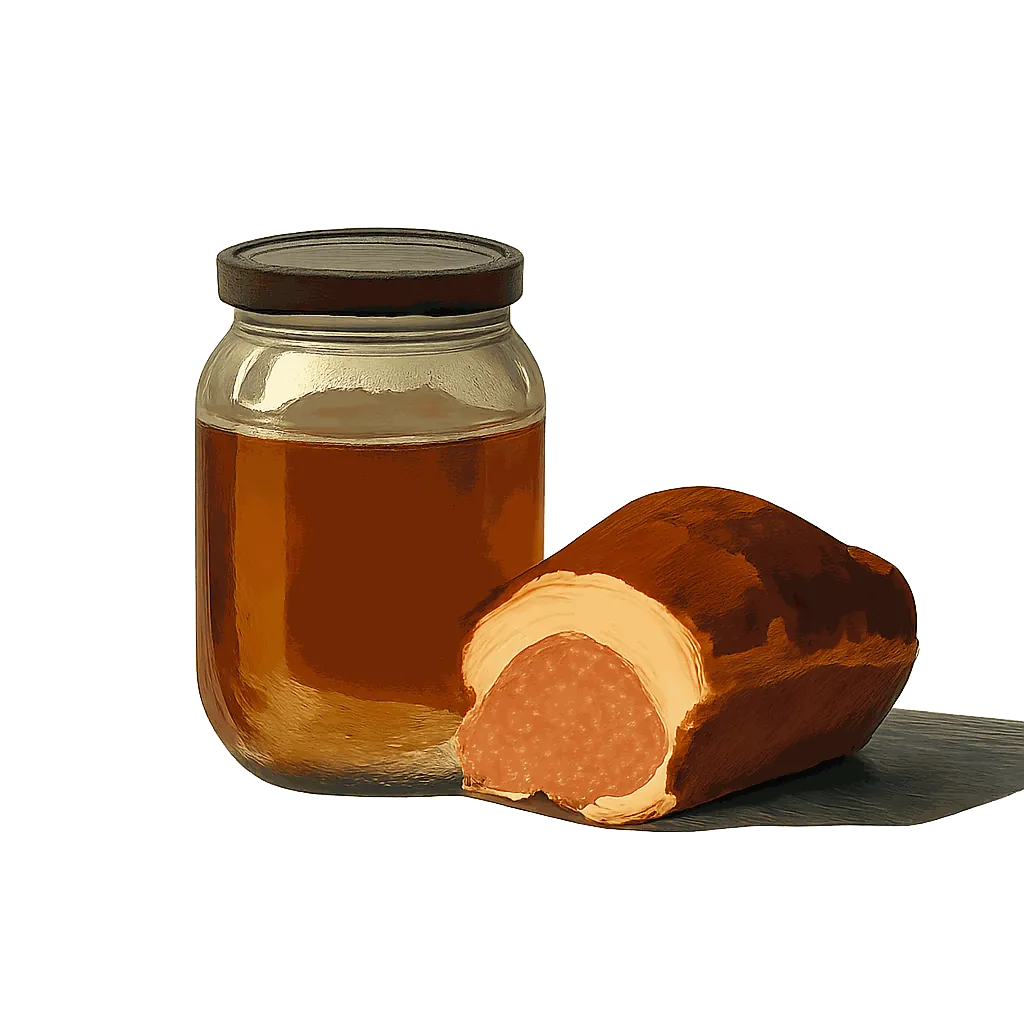Perfect Pairings & Recipes for
Chardonnay (Marlborough)
.webp)
Discover the best flavour pairings for Chardonnay (Marlborough) based on data analysis of thousands of recipes. Find perfect ingredient matches & delicious recipes.
Chardonnay (Marlborough) instantly conjures the embrace of oak and the bracing kiss of vanilla. But look beneath its obvious sourness and you'll discover a captivating symphony of softer notes, a whisper of caramel, a hint of butter, and subtle accents reminiscent of lactic acid that contribute remarkable depth. The culinary wizardry unfolds when we pair Chardonnay (Marlborough) with ingredients that let these nuances sing.
To chart these harmonies, we analysed thousands of ingredients, each deconstructed across 150 distinct flavour dimensions, pinpointing the notes that best complement this ingredient’s profile. Our analysis reveals, for example, how sesame seed's sesamol tones resonate with Chardonnay (Marlborough), and how broccoli's brassica notes create a surprising synergy with its warm sweetness.
Flavour Profile Of Chardonnay (Marlborough) Across 150 Dimensions Of Flavour
Flavour wheel chart showing the dominant flavour notes of Chardonnay (Marlborough): Caramel, Vanillic, Oaky, Lactic, Buttery, Peach, Pear, Malic, Blossom, Honeyed, Grapefruit, Plum, Coconut, Limestone, Toasted, Maple, Melon, Proteolytic, Apricot, Jasmine, Flint, Oyster
An ingredient's flavour comes from its core characteristics, like acidic, floral, and nectarous, combined with its unique aroma notes (outer bars). When pairing ingredients, aim to include a broad variety of core characteristics for a balanced dish. And choose aroma notes that complement each other for a harmonious combination.
The Flavour Code
To understand how flavour notes harmonise, we analysed more than 50,000 popular ingredient combinations. By exploring these pairings, we identified specific flavour notes that frequently occur together, indicating they share a harmonious relationship.
The Flavours That Harmonise With Caramel Notes
Strength of Association Between Flavours
The flavours most associated with caramel notes are: Brassica, Rosemary, Peppercorn, Sage, Petrichor, Camphor, Chanterelle, Mustard, Grassy, Bay leaf, Leafy, Dried Porcini, Ferrous, Eucalyptus, Thyme.
Our analysis shows that the flavour of caramel is strongly associated with the flavour of cabbage. This suggests we should look for ingredients with a cabbagy flavour, such as broccoli, when pairing with the caramel aroma notes of Chardonnay (Marlborough).
The recipe below provides inspiration for pairing Chardonnay (Marlborough) with broccoli.
Harmonious Flavours Of Chardonnay (Marlborough)
Just as our analysis reveals that caramel and cabbagy flavours tend to pair together, we can identify the full profile of flavours that harmonise with each of the flavour notes present in Chardonnay (Marlborough). For instance, the lactic acid flavours of Chardonnay (Marlborough) are strongly associated with cocoa and blackberry accents.
The accents linked to the various accents of Chardonnay (Marlborough) can be seen highlighted in the pink bars below.
Flavour Profile Of Chardonnay (Marlborough) And Its Complementary Flavour Notes
Flavour wheel chart showing the dominant flavour notes of Chardonnay (Marlborough): Caramel, Vanillic, Oaky, Lactic, Buttery, Peach, Pear, Malic, Blossom, Honeyed, Grapefruit, Plum, Coconut, Limestone, Toasted, Maple, Melon, Proteolytic, Apricot, Jasmine, Flint, Oyster
Matching Flavour Profiles
The flavour profile of sesame seed offers many of the aroma accents complementary to Chardonnay (Marlborough), including sesame and seedy notes. Because the flavour profile of sesame seed has many of the of the features that are complementary to Chardonnay (Marlborough), they are likely to pair very well together.
Prominent Flavour Notes Of Sesame Seed Are Represented By Longer Bars
Flavour wheel chart showing the dominant flavour notes of Sesame seed: Sesame, Almond, Caramel, Seedy, Toasted, Buttery, Coffee, Hazelnut, Honeyed, Cocoa, Yeasty, Hay, Charred, Grassy, Coconut, Sugary, Molasses, Maple, Proteolytic, Oxidized, Vanillic, Chlorophyll, Ginger, Walnut, Wheat, Maltol, Glutamic, Oleic
The chart above shows the unique profile of sesame seed across 150 dimensions of flavour, while the recipes below offer inspiration for bringing these flavours together with Chardonnay (Marlborough).
Recipes That Pair Chardonnay (Marlborough) With Sesame Seed
Linked Flavour Notes
Looking at the aroma notes that are most strongly associated with the various flavours of Chardonnay (Marlborough), we can identify other ingredients that are likely to pair well.
Chardonnay (Marlborough)'s Harmonious Flavours And Complementary Ingredients
Chardonnay (Marlborough)'s Strongest Flavours
Complementary Flavours
Ingredients with Complementary Flavours
Flavour groups:
Nectarous
Acidic
Floral
Herbal
Spice
Vegetal
Maillard
Earthy
Carnal
The left side of the chart above highlights the aroma notes of Chardonnay (Marlborough), along with the complementary aromas associated with each note. While the right side shows some of the ingredients that share many of the notes complementary to Chardonnay (Marlborough).
Prominent Pairings
Our analysis identifies dishes that pair well with Chardonnay (Marlborough) and highlights the prominent ingredient combinations within these recipes. Key pairs include white wine vinegar and caster sugar offering clean sweetness, mussel and banana shallot for sweetness, tarragon and fennel for foeniculum depth, and white wine and thyme for a complex thymic undertone. Explore these combinations to unlock Chardonnay (Marlborough)'s hidden complexity, reveal deep nuance, and elevate its vibrant character.
Ingredient Combinations Among Dishes That Pair With Chardonnay (Marlborough)
Flavour groups:
Sweet
Sour
Botanic
Herbal
Spice
Earthy
Bitter
Which Vegetables Go With Chardonnay (Marlborough)?
Choose vegetables that ground its sweetness or infuse with its wood aroma. Carrot and jerusalem artichoke offer vibrant, clean counterpoints, their verdant freshness lifting the palate. Celeriac add a gentle, oniony brightness, while artichoke introduces a sophisticated, anise-tinged elegance.
Alternatively, embrace vegetables that harmonise with Chardonnay (Marlborough)'s sweetness. The addition of romanesco, with its subtle brassica notes, can complement the caramel beautifully, while kale lends a pungent vegetal notes.
How Flavonomics Works
We've pioneered a unique, data-driven approach to decode the intricate art of flavour pairing. Our goal is to move beyond intuition and uncover the science of why certain ingredients harmonise beautifully. This rigorous methodology allows us to provide you with insightful and reliable pairing recommendations.
Our analysis begins with over 50,000 carefully selected recipes from acclaimed chefs like Galton Blackiston, Marcello Tully, and Pierre Lambinon. This premium dataset ensures our model distils genuine culinary excellence and creativity.
Each ingredient from these recipes is deconstructed across 150 distinct flavour dimensions, creating a unique numerical "flavour fingerprint." This quantification allows us to apply advanced analytical methods to identify complex patterns between flavour notes.
We identify popular ingredient combinations that frequently appear in our recipe database. Regression analysis is then performed on these pairings to statistically validate and pinpoint truly harmonious flavours.
These insights drive our predictive model, which allows us to take any ingredient (e.g., Chardonnay (Marlborough)), analyse its detailed flavour profile, and accurately reveal its complementary flavours and perfect ingredient partners.
Explore More
Discover more ingredient profiles and expand your culinary knowledge. Each ingredient page offers detailed analysis of flavour profiles, pairing insights, and culinary applications.
The content on our analysis blog is semi-automated. All of the words were manually written by a human, but the content is updated dynamically based on the data.


